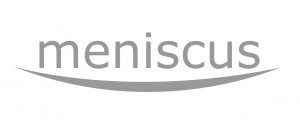Objective
To provide an automated energy billing and management reporting service for CHP units. The invoices are based on raw data sent to the Meniscus servers. Invoices are based on a range of key variables, discounts and unit rates entered into a simple web page.
This solutions is built using the Meniscus Calculation Engine (MCE) as it has a simple to use interface whilst still being very flexible.
Analytics delivered
- DUoS, Weekend, Peak/Off Peak aggregation within time bands defined as variables that can be changed from the web site
- CCl, CfD, Climate Change, DUoS, Weekend, Day/Night and Gas rates (p/kWh) depending on time intervals and unit rates set from the web site
- Application of heating and energy customer discounts with all discounts set from the web site
- Electricity, gas and heat half hour costs taking into account variable rates and discounts
- DUoS peak/off peak, weekend, day/night electricity costs
- Avoided Carbon Taxes, Energy cost savings, CRC saving, displaced electricity and heating loads (kWh), CO2 savings, Year to date financial year and contract to year cumulative savings Complex half hour electricity, gas and heat based calculations to estimate consumption under three main scenarios. This is not simple interpolation but rather checks on the outputs from the other two meters to confirm the third. I.e. if electricity data is missing then uses the gas use and the heat generated to estimate the electricity generated. Checks include:
- Is there missing raw data?.
- Are there constant values due to a static or stuck meter?
- Is one meter different to the other two? If so then this may indicate a faulty meter
Our involvement
Meniscus setup the database to deliver the energy billing information using the actual data uploaded from each CHP unit to the Meniscus servers.
The initial ‘template’ site was created using the most complex tariff structure envisaged. The invoice data from this one site was then used to test the calculation accuracy using a range of input variables and a range of imported raw data. Once the ‘template’ site was verified, it was used as the basis for all other CHP sites.
Use of a template approach enables new CHP units to be added rapidly.
Importing data – Meniscus created a bespoke importer to convert the CHP data into the required format for import into MCE. Raw data is imported every day.
Bespoke dashboard – Meniscus set up a simple yet secure ‘one page’ dashboard to enable staff to enter and update key variables, discounts and unit rates as and when required.
Management reporting – Meniscus set up two management reports. These reports are run on a scheduled basis and extract the calculated data from MCE. These reports generate the site specific invoices and another summarises all billing data across all sites. The reports can also be run on-demand.
Benefits
- Reduces labour costs and time to generate complex invoices internally using Excel
- Energy billing is updated at month end or at any time. Historically it took 20+ days to collate and generate the invoices
- The energy billing solution has been developed in a flexible manner, using MCE, allowing Meniscus to readily reconfigure the system as requested and to add new features and monitoring capability.
- Provides flexibility to change the analytics being delivered as a solution matures and evolves.
- Simple management as the client can easily update rates, discount and times (I.e. DUoS bands) using a simple bespoke web page
- Opportunity to enhance the existing service by delivering more advanced analytics as the contract develops
- Formalises the whole energy billing process
For more information on CHP and how the Government supports the use of Combined Heat and Power click here
